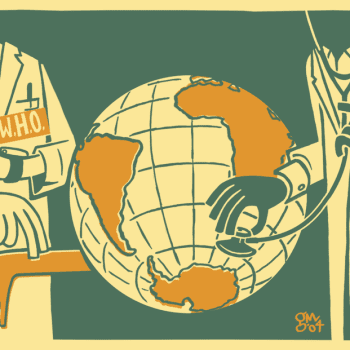Mallory Factor, a South Carolina businessman, has a better idea: “Bail out homeowners, not lenders,” he says. “Any qualified buyer who wants to buy a house,” he says, “could buy one at a guaranteed low interest rate, of, say, 3.5 percent. And any qualified homeowner who wants to refinance could get the same rate.” If that happens, Factor predicts, “There would be a flood of liquidity into the system, as people bought houses again, which would also help reduce the housing-stock overhang. In addition, as people refinanced, all these instruments, such as collateralized mortgage obligations, which Fannie Mae and Freddie Mac have choked on, would once again start performing. And that would save the banks and many investors. It would save the banks and investors by saving homeowners and homeownership.” In other words, trickle up, not trickle down.
The current interest rate for a standard 30-year mortgage is around 6 percent. At that rate, the payments on a $300,000 mortgage work out to $1,799.65 a month. By contrast, at Factor’s proposed rate 3.5 percent, the payment would be just $1,347.13 a month. That’s a whopping difference, especially for homeowners who might have paid more for a house than it is currently worth. And at 8 percent, which many adjustable rate mortgages (ARMs) have shot up to, the monthly bill is a prohibitive $2,201.29 a month.
This interest-rate buy-down is the elegant heart of Factor’s plan. And who would do the buying down? “The federal government,” Factor answers bluntly. “This is a government buy-down of interest rates, but it would benefit homeowners first, and only then, second, the banks.” But, he notes, the buy-down is only for qualified borrowers. So the banks would still lose a lot of money. Which is good, since they need to be reminded not to make this mistake again. And since there’s no Fannie or Freddie any more to buy these dubious loans in the future, the banks will have to be careful, once again, about who is a qualified borrower, and who is not. The government, Factor reminds us, would only be on the hook for the costs above 3.5 percent—the banks would be responsible for the first 3.5 percent, and for the principal.
That’s bad news for bankers, Factor adds, but good news for taxpayers: He estimates that his interest-rate buy-down plan would cost Uncle Sam perhaps $200 billion (more if interest rates rose, less if interest rates fell). But it would surely be cheaper, he suggests than the trillion or more that the Washington plan seems destined to cost. And once again, Factor’s plan would focus on Main Street, not Wall Street—surely a substantial virtue in and of itself.
What might be some other alternatives?















